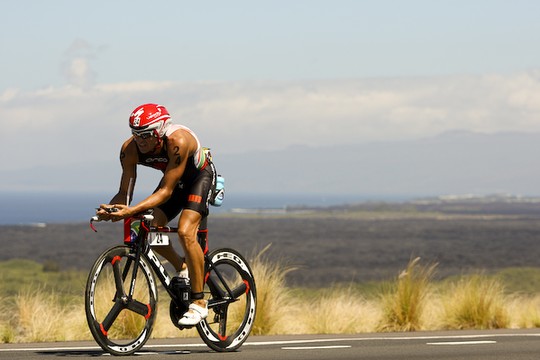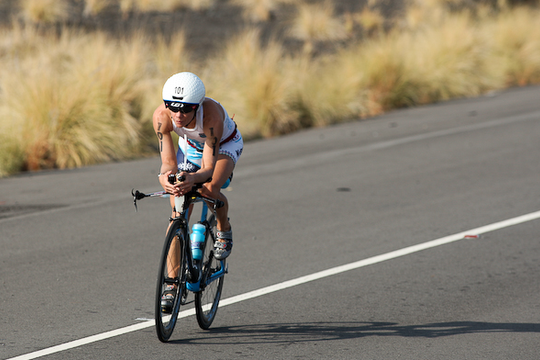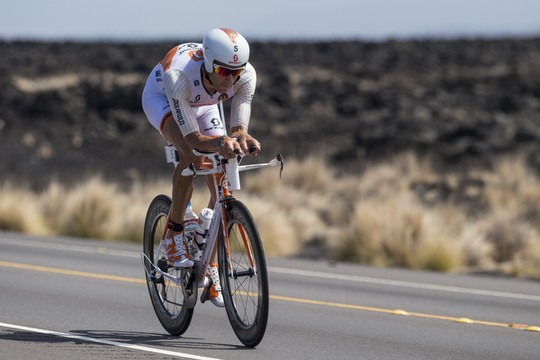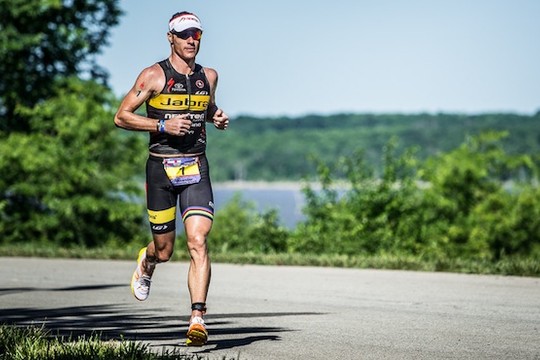Training
It all starts with training. If you are good you are good an Ironman distance triathlon will take you about ten hours or thereabouts, if you are average it will be around 12. Your body needs to be ready for a long day, so your training must reflect this. I know the Don Fink plan builds up the bike as you progress but my personal opinion is that you should be comfortable doing a 5 hour ride 12 weeks out from race day. This means you can then start focussing on building your ability to maintain race pace efforts for longer durations. Why so long? I think the long hours in the saddle train the muscles that support your back, arms, neck so that they do not limit your performance. Then all you need to focus on is your legs. Believe me your back etc do pretty much the same amount of work no matter how fast your legs are going. These long rides also build your aerobic engine allowing you to burn fat more effectively as a fuel source. Your long training rides should really not exceed a moderate effort, give or take the odd hill, and you should finish as strong as you started.

Once you are into your build blocks, say from weeks 11-3, you need to start adding in some harder efforts to your long rides, either on a few hills or with some increased efforts on the flat. Your aim is to lock in you Ironman pace and position on the bike. Your race pace efforts could build from say 3 x 15 min from 2 hrs into your bike, with some recovery between each, to perhaps 5 x 20 mins in your biggest week. You are trying to lock down a pace you think you can sustain for the duration of your Ironman bike so you know how it feels. This is best done when you are already a bit fatigued e.g. 2 hrs into your bike, to represent what it will be like on the back end of your bike leg. This must also be combined with a relentless focus to hold you aero position as much as possible – sitting up on the last hour of you bike leg wastes a lot of energy and time so you have to get your body ready for holding an aero position for the duration of the bike leg. Alongside this you need to start getting your race day nutrition sorted by practising this during your big training days and any races you have in your training plan leading up to your Ironman.
Tapering
This depends on how many hours you did in weeks 6-3. Above 20 hours a week you probably need a 3 week taper. 15 hrs maybe 2 weeks, if you are doing 10 hrs a week then a week long taper will do. It really depends on how much fatigue you have accumulated. If you stop training you lose fitness, that is why you reduce volume but maintain race specific intensity when tapering. This allows you to get over your fatigue and replenish your enery strores so you feel fresh and sharp and ready to race.

Race day
Avoid the temptation to change your bike set up. Do not change anything on race morning that you have not practised and feel 100% confident doing. Plan for the weather, if it is cold pack arm warmers, a gilet and even a lightweight rain jacket. Getting cold in a long distance triathlon can kill your race e.g. IM Switzerland various years. Practice T1 in your head… over and over! Make sure you know where your bag is… and your bike. Know your entry and exit points. Have a plan and execute it.
The bike leg
Athletes literally loose their minds in the excitement of the start of the bike. Unless you are planning to ride 4 hours 30 mins, at no point in the first hour should you be seeing 40 kph, think about it. If you are doing 40 kph in the last hour then maybe you should have gone faster but you will still be set for a cracking run.
Remember, you have a marathon to run at the end of all of this. Which is better a 5 hour bike and a 4 hour marathon or a 5 hour 20 bike and a 3 hour 30 marathon? The bike must set you up for the run. So if you are feeling great in the first hour check your speed/power, check your heart rate and start eating. If you can get the calories in and keep a steady pace you will race faster overall. How many times do you here athletes talk about how they could not eat on the bike? It usually means they were going to fast. I know if my heart rate is consistently above 140 I will struggle to digest my food, which means at some point I will blow up, which I did quite fantastically at IM Switzerland where my second lap took 20 mins longer than my first. Oh, by the way, my run was journey into a very dark place indeed.

2 hours in, you should be locking into your race pace. The field around you will be less excitable barring the large gruppo’s you sometimes get of draft illegals. Concentrate on your own race. The next 3 hours need to be focused on steady pacing with regular feeding. It can be difficult to maintain the focus but if you are pacing your race well you will find something really great is about to happen.
In the last third of the bike, if you have paced your race effectively, you will start to effortlessly move up through the field, passing those athletes who went out too quicly. All around you will be athletes sitting up and stretching out their backs, struggling up the hills that before were but minor lumps. Each athlete passed will give you a lift, and you will feel it has all been worthwhile. With 30 km to go it is time to get all your focus back. Concentrate on that aero position and think about your nutrition and hydration. I generally stop taking in solids at this point and try and get a large bottle of fluid down especially if it is hot. With the run to come you don’t want to much in the way of solids in your gut but you need to be sure you are not behind on fluids.
With 15 km to go you need to keep pushing and not back off. 5 km to go on the bike, watch out for the hustlers who want to race you into T2 avoid a last minute loss of concentration. Use the crowds to get you home.
T2 is coming, this should be a quick change. Again you will have a process in place for T2 that you will have rehearsed in training. Plan on getting out as fast as you can. Sure your back will be stiff, your feet will ache, your legs will feel heavy but you have got 42 kms of running to deal with that. So let your focus in T2 be on getting out as fast as possible and knocking off you first 10 km of the run!

Stay tuned for another guest blog about the Ironman run. Happy training! Gabriel.
Thats great Gabriel, love it thank you.
Sound advice there Gabriel, esp about pacing and nutrition. I always try to liken the first two hours of the bike as a trip to the shops or commuting. Also set my watch to bleep every 20mins to remind me to eat. Practice with what you plan to use. Personally I take honey and Marmite sarnies!
I am trying to figure out what is not going to melt in Nice 🙂